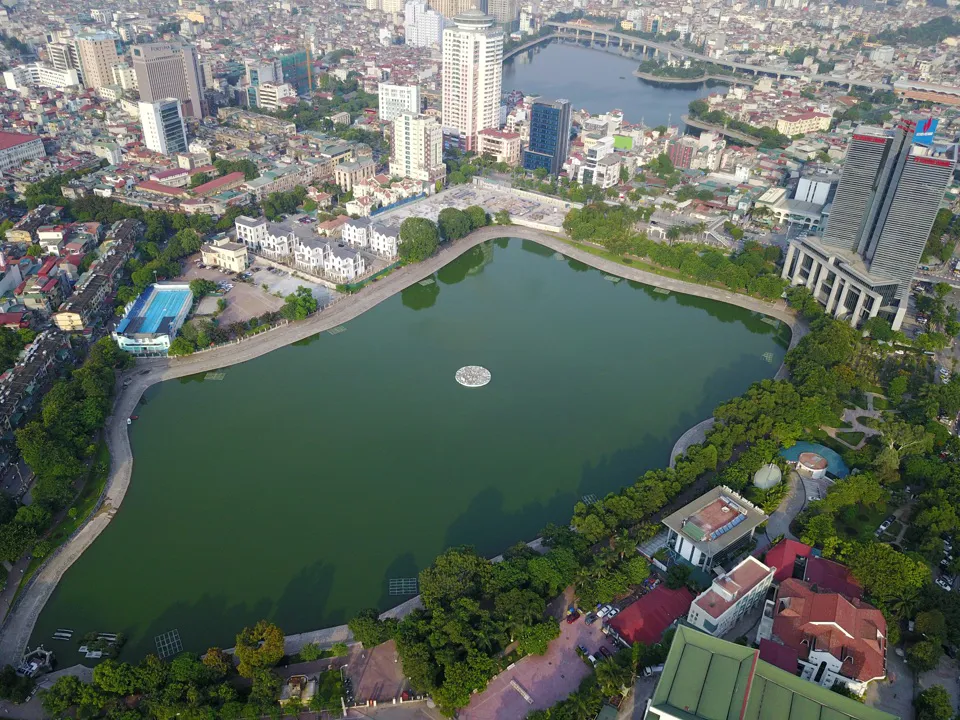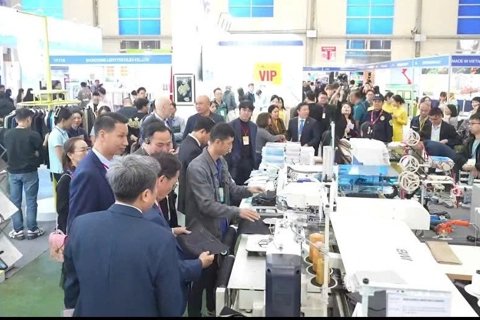Hanoi to build retention ponds and underground water tanks in urban areas
The move is seen as a viable solution to enhance drainage capacity and reduce inundation in the city.
Hanoi is implementing various solutions to manage flooding during rainfall, including the development of retention ponds and underground rainwater storage tanks. This sustainable drainage solution not only helps manage water but also enhances the urban landscape and architectural space of the capital city.
| A retention pond in Hanoi. Photo: Pham Hung/The Hanoi Times |
According to the Hanoi Sewerage and Drainage Company, before the installation of rainwater storage tanks, streets like Nguyen Khuyen would flood when it rained less than 50mm. However, since these tanks were installed, flooding on this street and in the surrounding areas has significantly decreased.
“ When precipitation was between 50-100mm, Nguyen Khuyen Street used to flood up to 0.5-0.7 meters. Since the rainwater tanks became operational, the water level during inundation has been reduced to 0.2-0.3 meters,” a representative from the company shared.
Associate Professor Dr. Nguyen Lam Quang, Deputy Director of the Vietnam Institute for Urban and Industrial Environment, told The Hanoi Times that sustainable urban drainage solutions involve utilizing and optimizing natural water flow through surface runoff. This is achieved by reducing the speed and volume of runoff via natural and artificial water storage systems, which help prevent flooding, replenish groundwater, and utilize rainwater for fire fighting, irrigation, and street cleaning, among other purposes.
This approach aligns with the Government's Decree 80/2014/ND-CP on drainage and wastewater treatment, as well as the specific conditions of Hanoi.
“Therefore, Hanoi must urgently implement measures to develop retention ponds and underground water tanks to enhance drainage capacity and reduce flooding in the city,” said Quang.
Associate Professor Dr. Dang Minh Hai, Deputy Head of the Water Resources Engineering Department at Thuy Loi University, believes that for projects involving changes in land use or drainage direction, developers must implement solutions to prevent increased rainwater runoff into the drainage system, thus avoiding localized flooding.
Specifically, developers looking to build residential or urban areas must obtain rainwater drainage permits and pay for rainwater drainage services. This requirement should be mandatory, said Hai.
Many experts shared the view that sustainable drainage, or slow drainage, involves managing rainwater to extend the of its flow so that urban runoff patterns more closely resemble natural ones. To achieve this, Hanoi should focus on source control, surface control, and area-wide control.
For source control, Hanoi should encourage the use of underground storage systems and rainwater reuse in homes and office buildings. The development of green roofs can significantly retain rainwater in vegetation and soil layers, reducing runoff into the urban drainage system and minimizing localized flooding during heavy rainfall.
| According to the drainage plan for Hanoi up to 2030, with a vision towards 2050, approved by the Prime Minister in Decision No. 725 on May 10, 2013, the urban drainage system is divided into four basins: To Lich, Left Bank of the Nhue River, Right Bank of the Nhue River, and Long Bien. |











